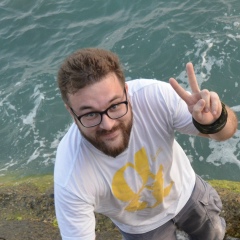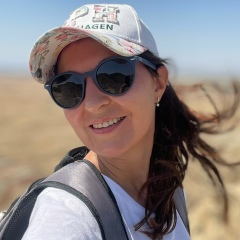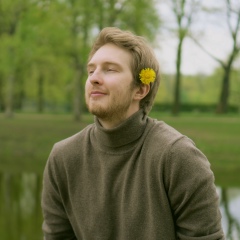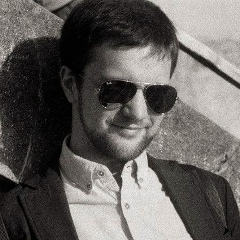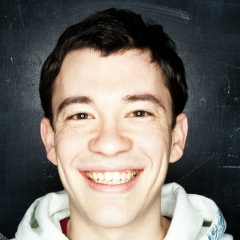Век живи - век учись. Открыл для себя историю Академии медицинских наук. Оказывается первые десять институтов Академии медицинских наук СССР в 1944 году были созданы на основе лабораторий и отделов предполагавшегося биомедицинского гиганта - Всесоюзного института экспериментальной медицины им.А.М.Горького (ВИЭМ).
1. В середине 1930-х предполагалось, что ВИЭМ объединит медицинскую и биологическую науку для всестороннего изучения закономерностей человеческого организма в условиях нормы и патологии. Основным лоббистом этого проекта до 1934 года был Максим Горький, которого увлекали идеи продления жизни человека.
2. ВИЭМ должен был заняться новыми на тот момент направлениями - трансплантологией, иммунологией, геронтологией и гериатрией, биохимией рака, микробиологией, и иными направлениями.
3. Организационная часть реализации столь масштабной идеи была не менее монументальной. На огромной территории в московском Щукино предполагалось строительство целого биомедицинского городка с НИИ и клиниками. Сейчас на его месте расположены Курчатовский институт, несколько атомных НИИ, ФМБЦ им.Бурназяна и другие медицинские НИИ.
4. Можно предположить, если бы не война, место масштабного Атомного проекта в истории СССР вполне мог бы занять Биомедицинский, инфраструктура которого была проработана на тот момент гораздо тщательнее. Единственное, что на тот момент объективно стояло на пути подвижников этого проекта - отсутствие методов молекулярной биологии, время развития которой придет только через 20-30 лет.
5. Нет ничего сильнее идеи, время которой пришло. Время пришло, и конечно же именно в этот момент РАМН забыла зачем ее создавали. Дождавшись прогресса в области молекулярной биологии, биологии развития и нейрофизиологии, в самый важный момент, когда требовалось самособраться в структуру передовых исследований - РАМН без бою сдалась бюрократам.
(Две башни на рисунке - проект здания соматической клиники ВИЭМ).
1. В середине 1930-х предполагалось, что ВИЭМ объединит медицинскую и биологическую науку для всестороннего изучения закономерностей человеческого организма в условиях нормы и патологии. Основным лоббистом этого проекта до 1934 года был Максим Горький, которого увлекали идеи продления жизни человека.
2. ВИЭМ должен был заняться новыми на тот момент направлениями - трансплантологией, иммунологией, геронтологией и гериатрией, биохимией рака, микробиологией, и иными направлениями.
3. Организационная часть реализации столь масштабной идеи была не менее монументальной. На огромной территории в московском Щукино предполагалось строительство целого биомедицинского городка с НИИ и клиниками. Сейчас на его месте расположены Курчатовский институт, несколько атомных НИИ, ФМБЦ им.Бурназяна и другие медицинские НИИ.
4. Можно предположить, если бы не война, место масштабного Атомного проекта в истории СССР вполне мог бы занять Биомедицинский, инфраструктура которого была проработана на тот момент гораздо тщательнее. Единственное, что на тот момент объективно стояло на пути подвижников этого проекта - отсутствие методов молекулярной биологии, время развития которой придет только через 20-30 лет.
5. Нет ничего сильнее идеи, время которой пришло. Время пришло, и конечно же именно в этот момент РАМН забыла зачем ее создавали. Дождавшись прогресса в области молекулярной биологии, биологии развития и нейрофизиологии, в самый важный момент, когда требовалось самособраться в структуру передовых исследований - РАМН без бою сдалась бюрократам.
(Две башни на рисунке - проект здания соматической клиники ВИЭМ).
Live and learn. Discovered the history of the Academy of Medical Sciences. It turns out that the first ten institutes of the USSR Academy of Medical Sciences in 1944 were created on the basis of the laboratories and departments of the proposed biomedical giant, the Gorky All-Union Institute of Experimental Medicine (VIEM).
1. In the mid-1930s, it was assumed that VIEM would unite medical and biological sciences for a comprehensive study of the laws of the human body in terms of the norm and pathology. The main lobbyist for this project until 1934 was Maxim Gorky, who was fascinated by the idea of extending a person’s life.
2. VIEM was supposed to take up new areas at that time - transplantology, immunology, gerontology and geriatrics, cancer biochemistry, microbiology, and other areas.
3. The organizational part of the implementation of such a large-scale idea was no less monumental. On a vast territory in Moscow, Shchukino assumed the construction of a whole biomedical town with research institutes and clinics. Now, in its place are the Kurchatov Institute, several nuclear research institutes, Burnazyan FMBC and other medical research institutes.
4. We can assume, if it were not for the war, the place of a large-scale Atomic Project in the history of the USSR could well have taken Biomedical, the infrastructure of which was worked out at that time much more carefully. The only thing that objectively stood in the way of devotees of this project at that time was the absence of molecular biology methods, the development time of which will come only in 20-30 years.
5. There is nothing stronger than an idea whose time has come. The time has come, and of course, precisely at this moment, the RAMS forgot why it was created. Having waited for progress in the field of molecular biology, developmental biology, and neurophysiology, at the most important moment when it was necessary to self-assemble into the structure of advanced research, the Russian Academy of Medical Sciences surrendered to the bureaucrats without a fight.
(The two towers in the figure are the design of the building of the VIEM somatic clinic).
1. In the mid-1930s, it was assumed that VIEM would unite medical and biological sciences for a comprehensive study of the laws of the human body in terms of the norm and pathology. The main lobbyist for this project until 1934 was Maxim Gorky, who was fascinated by the idea of extending a person’s life.
2. VIEM was supposed to take up new areas at that time - transplantology, immunology, gerontology and geriatrics, cancer biochemistry, microbiology, and other areas.
3. The organizational part of the implementation of such a large-scale idea was no less monumental. On a vast territory in Moscow, Shchukino assumed the construction of a whole biomedical town with research institutes and clinics. Now, in its place are the Kurchatov Institute, several nuclear research institutes, Burnazyan FMBC and other medical research institutes.
4. We can assume, if it were not for the war, the place of a large-scale Atomic Project in the history of the USSR could well have taken Biomedical, the infrastructure of which was worked out at that time much more carefully. The only thing that objectively stood in the way of devotees of this project at that time was the absence of molecular biology methods, the development time of which will come only in 20-30 years.
5. There is nothing stronger than an idea whose time has come. The time has come, and of course, precisely at this moment, the RAMS forgot why it was created. Having waited for progress in the field of molecular biology, developmental biology, and neurophysiology, at the most important moment when it was necessary to self-assemble into the structure of advanced research, the Russian Academy of Medical Sciences surrendered to the bureaucrats without a fight.
(The two towers in the figure are the design of the building of the VIEM somatic clinic).
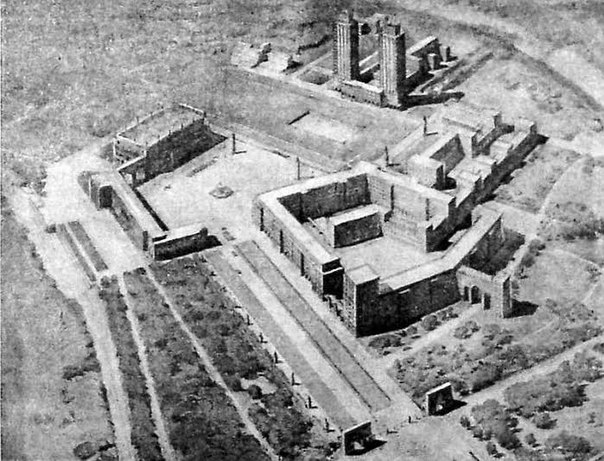

У записи 6 лайков,
1 репостов.
1 репостов.
Эту запись оставил(а) на своей стене Илья Клабуков


